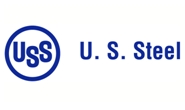Market Segment

December 20, 2019
U.S. Steel to Idle Great Lakes Works
Written by Sandy Williams
U.S. Steel announced today that it intends to “indefinitely idle” a significant portion of its Great Lakes Works operation near Detroit. The decision was made to better align the company with its three core flat rolled operations and advance its “best of both strategy” as an integrated and EAF company.
U.S. Steel expects to begin idling the iron and steelmaking facilities on or around April 1, 2020, and the Hot Strip Mill rolling facility before the end of 2020. WARN Act notices will be sent to approximately 1,545 employees at Great Lakes Works regarding the impending layoffs. U.S. Steel anticipates the idling will affect fewer than that in the final tally.
“In order to further accelerate our strategy of creating a world-competitive ‘best of both’ U.S. Steel, we must make deliberate but difficult operational decisions,” said U.S. Steel President and CEO David Burritt. “In this case, current market conditions and the long-term outlook for Great Lakes Works made it imperative that we act now, allowing us to better align our resources to deliver cost or capability differentiation across our footprint. Transitioning production currently at Great Lakes Works to Gary Works will enable increased efficiency in the use of our assets, improve our ability to meet our customers’ needs for sustainable steel solutions and will help our company get to our future state faster.”
U.S. Steel stated in a press release: “The company’s strategy is focused on three core assets within its North American Flat-Rolled segment designed to deliver cost or capability differentiation. The best of both strategy is highlighted by the following investments announced earlier this year: the more than $1 billion endless casting and rolling and cogeneration projects at Mon Valley Works in Pennsylvania, the $750 million in the hot strip mill and other projects at Gary Works in Indiana, and Big River Steel in Arkansas, which is the nation’s first LEED certified steel mill. U.S. Steel ultimately intends to fully acquire Big River Steel by exercising its call option for the remaining equity within the next four years.
“These strategic best of both investments, along with projects such as the $280 million electric arc furnace being built at U.S. Steel’s Fairfield Tubular Operations in Alabama, are already creating construction jobs and building a future that ensures more secure, sustainable jobs for the company’s employees. They also help the company reach its voluntary goal of a 20 percent reduction in greenhouse gas emissions intensity by 2030.
“The company currently expects to continue operating the following areas at Great Lakes Works in line with customer demand: the Pickle Line, Cold Mill, Sheet Temper Mill, Continuous Galvanizing Line (CGL), Annealing, and Warehouses.”







